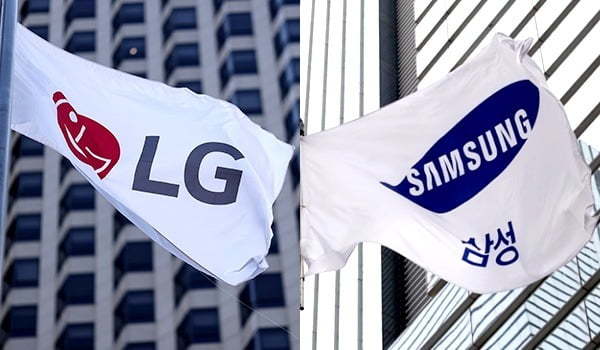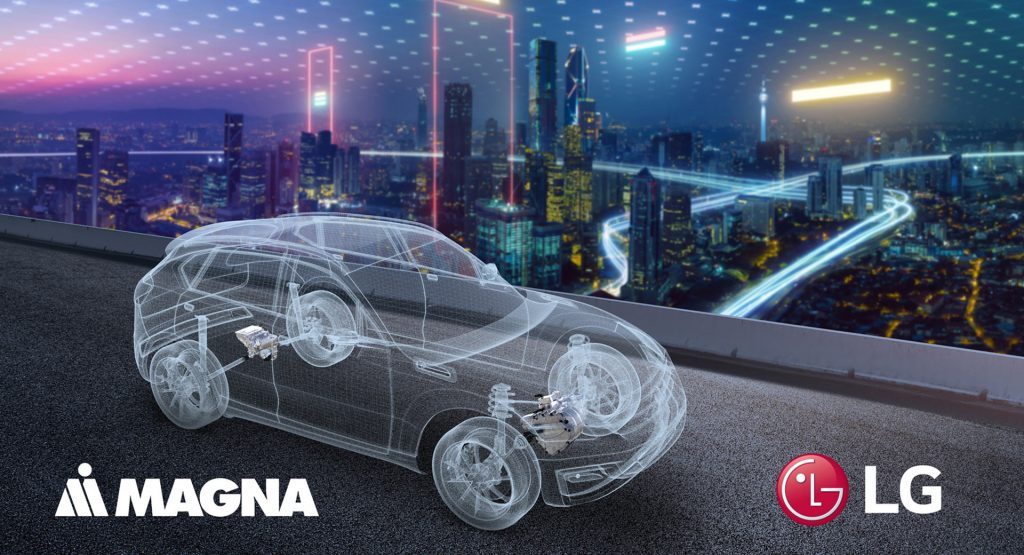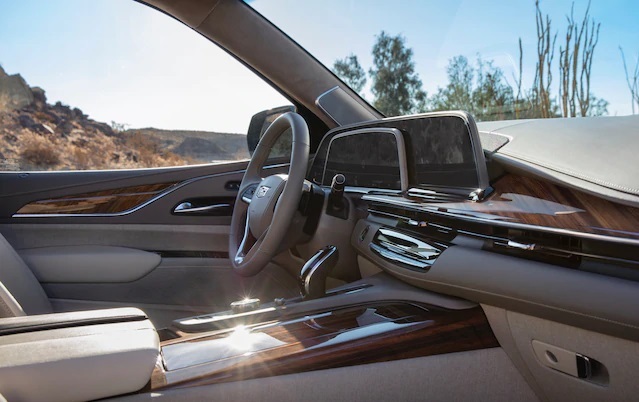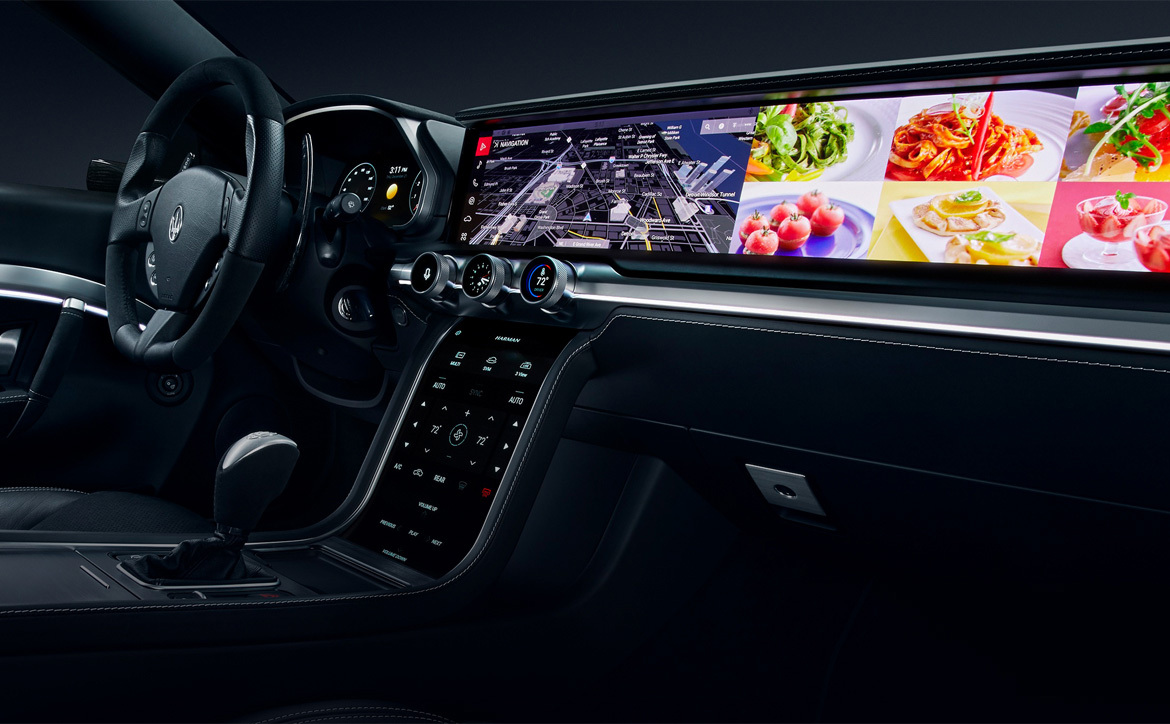[News Analysis] Will there ever be an LG or Samsung car?
Electric cars blur lines between automakers, battery manufacturers
By Kim Byung-wookPublished : Jan. 6, 2021 - 16:31

As batteries account for more than 40 percent of the cost of an electric vehicle’s parts, major automakers including Tesla, BMW and Volkswagen are making efforts to develop their own batteries.
Such moves have stoked concerns that South Korean battery giants -- LG Energy Solution, Samsung SDI and SK Innovation -- might lose their clients in the long term.
But just as automakers have invaded the field of battery manufacturing, local battery producers are slowly infiltrating the auto parts industry, since electric vehicles are structurally much simpler to build than conventional gasoline-powered vehicles.
“Inside internal combustion engine vehicles, about 30,000 parts have to function organically, so only experienced automakers can make them. However, EVs, which have fewer than half as many parts, require little expertise and can be manufactured by anyone with batteries, motors and wheels,” said Kim Pil-soo, an automotive engineering professor at Daelim University.
Just like Apple and Google, which once seemed to have nothing to do with automobiles but are now racing to debut their own self-driving consumer electric vehicles, Samsung and LG may someday churn out cars of their own, using their battery, autonomous driving and related technology, the expert predicted.
The recent moves by automakers seeking to produce their own batteries and the low entry barrier for electric vehicles could make this happen sooner.
“As businesses of automakers and battery manufacturers collide, the survival of the fittest will begin in the near future,” Kim predicted.
LG in full throttle
As if to vindicate Kim’s vision, LG Electronics announced last month that it would carve out part of its vehicle component solutions segment and set up a $1 billion joint venture with the world’s third-largest auto parts maker, Magna International, to make key components for electric vehicles.
Set for launch in July, the JV -- tentatively named LG Magna e-Powertrain -- will produce e-motors, inverters and onboard chargers in LG Electronics’ factories in Korea and China. LG would hold a 51 percent stake in the JV and Magna the rest.
“Manufacturers need to be disruptive to maintain leadership positions in electrification and, through this deal, LG is entering a new phase in its automotive components business, a growth opportunity with enormous potential,” said Kim Jin-yong, president of the vehicle component solutions sector.

By combining Magna’s strength in electric powertrain systems and LG Electronics’ expertise in component development for e-motors and inverters, the JV is expected to give a boost to the auto parts business of the country’s fourth-largest conglomerate, LG Group, which has seen exponential growth in recent years.
In 2014, one year after LG Electronics established its vehicle component solutions sector, LG Group’s total revenue generated by auto parts and electric vehicle batteries stood at about 3 trillion won ($2.7 billion). The revenue grew steadily to 4.5 trillion won in 2015, then spiked to 9.6 trillion won in 2017. The two businesses are expected to have reaped revenue worth 16.2 trillion won last year.
Currently, LG Group has four major affiliates that produce batteries and auto parts -- LG Energy Solution, LG Electronics, LG Display and LG Innotek.

According to market projections from analysts, LG Energy Solution, the No. 2 global electric vehicle battery producer as of November, will have generated as much as 8 trillion won in revenue from its electric vehicle battery business last year, while LG Electronics’ vehicle component solutions sector is projected to have brought in 5.8 trillion won. LG Display, the world’s No. 1 display producer for cars as of 2019, is estimated to have scored 1.2 trillion won in revenue in its automotive display business last year. LG Innotek, the high-tech parts making affiliate of LG that supplies motor sensors and camera modules, is projected to have earned 1.18 trillion won from its auto parts business.
Samsung ready for takeoff
Equipped with battery unit Samsung SDI, Samsung Group is another conglomerate that is seeking aggressive expansion into the auto industry.
Samsung’s advancement into the auto industry began in 2016 when Samsung Electronics acquired the US auto parts supplier Harman International Industries for $8 billion. However, Samsung Electronics has faced constant criticism for failing to make the most of the deal. Harman’s operating profit, which stood at 850 billion won at 2016, shrank after the takeover -- to 57.4 billion won in 2017 and then 322.3 billion won in 2019.
Though Harman’s performance deteriorated due to sluggish auto sales amid the pandemic, hemorrhaging money for an operating loss of 280 billion won in the January-June period last year, it managed to swing back into the black in the third quarter, posting an operating profit of 150 billion won.
What’s more encouraging is that Harman is increasing its presence in the global digital cockpit market. According to estimates based on Omdia and LMC data, Harman commanded 27.7 percent of the global digital cockpit market in the third quarter last year, a significant increase from 24.8 percent and 18.8 percent in the third quarters of 2019 and 2018, respectively.

With the global digital cockpit market expected to grow to $32.3 billion by 2025 from $13.9 billion in 2018, industry watchers say Samsung’s core IT technologies encompassing chips, sensors and displays will create further synergies with Harman’s digital cockpits.
For Samsung Electronics, Harman’s digital cockpits could serve as a vessel for the world’s top memory-chip maker to expand its market share in the global automotive processor market. Since 2018, Samsung Electronics has developed its own automotive processor called “Exynos Auto” and installed it in Harman’s digital cockpits.
Though the global automotive processor market is expected to grow to $65.6 billion by 2024 from $41.8 billion in 2018 according to IHS Markit, there is no dominant winner in the market, with top players commanding 28.8 percent of the market as of 2019 -- 10.8 percent by the Netherlands’ NXP, 9.9 percent by Germany’s Infineon and 8.1 percent by Japan’s Renesas Electronics.
Samsung Display, the No. 1 player in the market for OLED panels for smartphones, is mounting its products on Harman digital cockpits, as the global automotive display market is expected to grow to $10.5 billion by 2023 from $8.2 billion as of 2019, according to Omdia.
Samsung Electro-Mechanics, which manufactures multilayer ceramic capacitors for automobiles, is another beneficiary of Harman’s growth.
MLCCs, which ensure that electric currents flow at stable levels and supply chips with the right amount of power, have recently emerged as essential components of electric vehicles and self-driving vehicles. Unlike smartphones, which require 800 to 1,200 MLCCs, electric vehicles or self-driving cars need at least 15,000 to 20,000 MLCCs, according to industry sources.
According to US market researcher ReportLinker, Japan’s Murata is leading the global automotive MLCC market, currently controlling 56 percent of the market. Though Samsung Electro-Mechanics is ranked fourth with a market share of 6 percent, its aim is to rise to the No. 2 position in the market with the help of Harman.
To catch up with Murata, the electronic parts supplier affiliated with Samsung Electronics is seeking rapid expansion, with its 570 billion won automotive MLCC plant in Tianjin, China, scheduled to begin mass production this year.
Samsung Electro-Mechanics aims to increase the ratio of its non-IT MLCC products to 50 percent of all its MLCC products by 2024 from last year’s 20 percent, according to the company.
Morgan Stanley Research forecast that the global automotive MLCC market will grow to $15.7 billion by 2025 from $9.9 billion in 2019.
Cars of their own? Not anytime soon
Despite having the capabilities, LG and Samsung are unlikely to pursue electric cars under their own brands for the time being as doing so could hamper their booming battery business.
“Korean battery makers have sufficient ability to make their own EVs. However, the moment they do, they instantly become competitors to their clients. The change in relationship can cause disruptions in their battery sales,” said Hwang Sung-ho, a mechanical engineering professor at Sungkyunkwan University.
As automakers and battery suppliers have to exchange detailed technological data to optimize electric vehicle batteries, clients won’t risk exposing their know-how if LG and Samsung become their competitors in the auto market, Hwang added.
Sources from LG and Samsung concurred, saying they intend to focus on auto parts and have no plans to make their own electric vehicles.
Also, analysts say LG and Samsung face totally different circumstances than Apple.
“As cars are becoming more of an electronic device, software competitiveness has become ever more important, which is why Apple Car is getting attention. However, as LG and Samsung have a competitive edge in hardware, not software, they are unlikely to develop their own EVs,” KTB Investment & Securities analyst Lee Han-joon said.
By Kim Byung-wook (kbw@heraldcorp.com)







![[KH Explains] How should Korea adjust its trade defenses against Chinese EVs?](http://res.heraldm.com/phpwas/restmb_idxmake.php?idx=644&simg=/content/image/2024/04/15/20240415050562_0.jpg&u=20240415144419)










![[Today’s K-pop] Stray Kids to return soon: report](http://res.heraldm.com/phpwas/restmb_idxmake.php?idx=642&simg=/content/image/2024/04/16/20240416050713_0.jpg&u=)